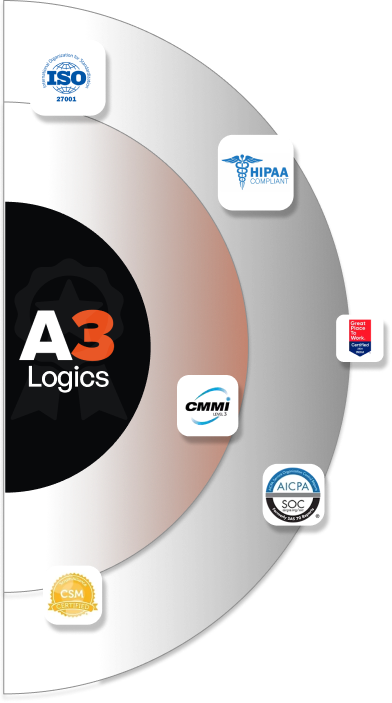eLearning is a big part of the professional IT services and other industries, it tends to grow with time and the new trends sinking in. This type of software aims at providing the right kind of learning to students, employees, or anyone willing to learn and grow.
eLearning software enables you to deliver courses and instructions electronically through the internet, it is also called electronic learning software. The patterns of eLearning created by an organization for their employees, ensure the growth of business processes by providing an interactive curriculum.
There is an immense need for eLearning in every industry, and to fulfill these needs, eLearning software are developed. An eLearning software development company makes it possible for people to learn and get to know all about the latest trends flowing in the market and their working style.
The trends in eLearning are increasing with new developments, such as Mastery-Based learning, Content Creation and Curation, Gratification, and many more that help the software to get better over time.
Table of Contents
Need for E-learning Software
The need for eLearning software is growing every day, and one should have options to choose the best software from, and in order to do the same, there are a number of eLearning software available to match your needs.
Before you begin your search for the right eLearning software, you must decide on what kind of software will best meet your needs, and research about it thoroughly, and then finalize any of them.
E-learning software helps you manage and create custom-built courses to suit your organization. The working style of this software is flexible, user-friendly, and designed to help create an educational culture and an enhanced employee experience for every company.
There are a number of IT consulting firms that deal with eLearning software and its development. This software helps in maintaining a healthy and clear relationship between a company and its employee by promoting learning.
Current trends and challenges in the e-learning industry
The e-learning industry is experiencing rapid growth with the increasing popularity of online courses. The trend towards more flexible learning options is pushing the growth. Gamification and microlearning are two major trends nowadays. Gamification involves incorporating game elements like points and badges in e-learning to make it more interesting and motivate learners. Microlearning refers to short learning sessions of 3 to 5 minutes using videos, animations, and infographics. This matches the shorter attention spans of learners with the help of custom software development services .
The move to blended learning, a mix of in-person and online classes, is becoming popular as universities and companies aim to reduce costs. Adaptive learning, which customizes lessons to learners’ abilities, and mobile learning, using phones and tablets for courses, are also prevalent trends.
However, the industry faces several challenges. High development costs make it difficult for many trainers and educators to create good quality courses. Lack of personal interaction is an issue for some learners. Many lack self-discipline for fully online courses.
High dropout rates remain a key concern as not all online learners finish their programs. Keeping content engaging and courses visually appealing is difficult. Technological issues like slow internet speeds and device incompatibility also pose problems.
Key factors driving the demand for e-learning software
The e-learning software industry is growing rapidly due to a number of demand-side factors. Convenient access to learning is a major driver of the e-learning trend. With e-learning software, learners can access training lessons on their own schedule using any internet-connected device. This convenience factor attracts many learners.
Cost efficiency is another important factor fueling demand. E-learning software allows companies and educational institutions to reduce costs by eliminating expenditures on physical classrooms, course materials, and travel expenses. Companies especially benefit from the ability to train a large, dispersed workforce at a lower cost through e-learning.
The need for ongoing custom software development consulting and lifelong learning is pushing demand for e-learning tools. As jobs evolve rapidly, employees must constantly upgrade their skills to remain relevant. E-learning provides a flexible way for workers to learn new skills at their own pace.
Changing student preferences are also propelling e-learning adoption. Younger students, who have grown up with technology, prefer the digital, interactive nature of e-learning to traditional classroom learning. This trend is compelling educational institutions to embrace e-learning platforms.
The COVID-19 pandemic has accelerated the transition to e-learning as physical classrooms were shut down. Many organizations and schools have come to realize the benefits of e-learning during this period, and this is likely to increase long-term demand.
Essential Features of Successful E-learning Software
E-learning software ambitions to supply on-line education and training, so its fulfillment depends on how properly it does that process. Key capabilities that make e-gaining knowledge of software program powerful consist of interactivity, personalization, tracking and reporting, and content management.
Interactivity
It is important for engaging rookies and retaining their interest. Tools like boards, quizzes, video conferencing, and interactive video permit beginners to exercise and get hold of comments. A custom software development company can help enhance retention of knowledge.
Personalization
Personalized getting to know paths tailored to character newbies help maximize outcomes. Successful e-studying software uses functions like adaptive gaining knowledge of and performance monitoring to personalize content for each learner.
Reporting
Tracking learner development and producing certain reviews for administrators and instructors make certain duty. Instructors can discover areas wherein newbies war and provide focused help. Administrators gain perception into the effectiveness of numerous guides and packages.
Content Management
Robust content material management abilities are important to maintain and replace publications. Features like version control, ability to add diverse file types, and integration with authoring equipment enable seamless content material control. A custom software development services USA can without problems alter or create new training.
Virtual Reality (VR) and Augmented Reality (AR) in E-learning
Virtual reality (VR) and augmented fact (AR) technology are emerging as precious tools for immersive learning reviews in schooling and company training. VR creates simulated surroundings even as AR complements the actual world.
VR can place beginners directly into simulated environments which are difficult or high priced to recreate in actual life. Students can revel in historical durations, have interaction with 3-d gadgets, and go to places like outer space.
AR brings digital factors into the real world via a device’s digital camera view. In e-mastering, AR can overlay interactive 3-D fashions and visualizations onto physical gadgets to illustrate complex ideas. A custom software development company USA can manage and have interaction with those virtual objects for deeper know-how.
Some advantages of VR and AR in e-learning include:
- Increased engagement: Students find the experience stimulating and immersive.
- Better visualization: 3D visualization helps complex subjects become easier to grasp.
- Enhanced memory: Students remember lessons more effectively due to embodied cognition.
- Practical applications: VR simulations allow learners to practice skills in a safe environment.
- Flexibility: VR and AR experiences can be accessed anywhere using mobile devices.
However, high costs of hardware and content creation limit widespread adoption currently. Motion sickness and eye strain are other potential issues. Many educators and custom software development outsourcing companies also lack experience integrating these technologies effectively.
What are the advantages of eLearning in an organization?
eLearning caters to modern learner preferences and has gained popularity among them. The research found that 93 percent of employees prefer to learn on the job. Learners are busy multitasking and have a limited attention span. If organizations want them to learn something new, they have to offer bite-sized pieces of information that do not take too much time to consume.
There are many advantages of eLearning software, some of them are:
1. Saves Money And Time
With online learning, learners can access content anywhere and any time, and every website development company wants their customers to have access to courses in order to save time and money.
eLearning is cost-effective, companies save a substantial amount of money, as with the online learning process, the need for transportation or to compile your employee is no more, which eventually saves money.
2. eLearning Leads To Better Control
Modern learners prefer small and interactive content. Every person would rather watch a video or listen to the podcast, or read through pages manually, instead of doing it all in the traditional way.
E-learning tools, such as the lcms software enable learning designers to make content interactive. The more engaging the content is, the better the learners remember information. If they enjoy learning, they are able to recall and apply the concepts at work.
3. It Is Consistent
In face-to-face sessions, every instructor or the lead has different ways and methods of teaching, which has not proved to be a good style of learning in any industry. Each learner goes through the same experience regardless of when and where he or she takes the course.
Online learning provides training that is consistent and standardized every time, which helps learners to have a clear understanding of all that has been taught to them, without any confusion.
4. eLearning Is Flexible
Online learning is very flexible, you can provide it to as many learners as you like and it is a one-time investment. As many learners take the course, you will soon be able to write your expenses away.
The software can pile up a number of learners and is useful to them as it provides all the required information and educates them on new things, always.
5. It Is Personalized
Every learner has their own unique preferences and goals for the learning, eLearning tries to cater to individual needs. It allows its learners to choose their learning path and navigate at their own pace.
When they decide what to learn and when they remain invested in the course for the long term. When the learners get a customized platform for their learning process they tend to learn faster and easier. All enterprise software development services providers want their learning platforms to run smoother, hence personalized learning helps in more ways the one imagines.
Scope of eLearning in the world
eLearning apps can be applied to every aspect of a human’s life, as there is nothing that learning cannot solve, hence learning is important and will go a long way. E-learning tools can operate effectively within both carefully selected and optimally integrated course design models and as emergent facilitators of communication and learning in informal contexts.
The value of the eLearning market is expected to grow to 952.14 Billion by 2030. According to Skill Scouter, the eLearning industry has grown by over 900% since 2000, it has also led to an increase in income for 42% of US organizations. The growth of the internet is a big reason for the massive explosion of this industry and is expected to keep growing as technological advancements continue to improve.
Enhance Productivity and Efficiency with our top-notch software development
Some eLearning Software Development That Will Flourish Your Business?
1. Learning Management Software
LMS is one of the major and widely used eLearning software and it manages all vital aspects of a company’s various training efforts. They can also track learners’ progress through the smart in-built analytics features, to help the company promote their employees’ workflow and learning process.
A custom LMS development solution helps in providing better control and working process to the companies by helping them in an easy and smooth transition. In IT consulting firms LMS holds great value, as it is responsible for managing all the learning aspects of an employee.
The six major advantages of having an LMS are, accessibility, durability, interoperability, reusability, maintenance ability, and adaptability, which constitute the concept of LMS. Some examples of LMS are Zoom, EdApp, Kadenze, Spongelab, and others.
2. Authoring Tools and Software
An authoring tool is a piece of software that enables the creation of all the digital content in the market and helps in the better functioning of the same. This type of solution can sometimes be as simple as creating a word document, or sometimes as complex as a graphic design tool.
An eLearning authoring software allows the user to generate and manipulate multimedia objects for the content’s sole purpose. The realm of learning and development requires these tools to create digital learning content, courses for employees on new machines or regulations, and various things.
Examples of authoring tools can be, Elucidat, Articulate rise, Adobe Captive, and various others.
3. Learning Content Management Software
It is an integrated multi-user administrative, authoring, and delivery platform that allows managers to host, schedule, manage, assess, register, track, and test online training activities.
Although a Content Management System (CMS) has similar features, only the ‘L’ in LCMS provides the learning mechanism possible for content professionals and subject matter experts to create learning activities, collaborate, and reuse learning assets more efficiently
All the mLearning Solutions are based on the LCMS solutions, as they provide the best working flow and management. Only an LCMS can manage the full content lifecycle, from authoring and publishing to delivery and analysis of the content.
4. Web-Based Training Management System
Web-based training is any form of training that is delivered online. WBT allows for unparalleled flexibility, which means that anyone can access your course content or training programs.
This type of training solely focuses on the internet-based training process that will help an organization and individual to grow and perform all the tasks. There are three main types of web-based employee training and education: Synchronous training, Asynchronous training, and Blended web-based training.
There are various types of platforms that are web-based, some of them are Coursera, eDX, GoSkills, SkillShare, and many others.
5. Knowledge Management Solutions
A knowledge-based system (KBS) is a computer program that uses knowledge-based methods to solve complex problems. The term is broad and refers to many different kinds of systems.
There are IT professional service providers working to create a platform that can provide learners with knowledge and important information so that they can learn new things and keep up with the trends and changing world.
The one common theme that unites all knowledge management software is an attempt to represent knowledge explicitly and a reasoning system that allows it to derive new knowledge. Thus, a knowledge-based system has two distinguishing features: a knowledge base and an interference engine.
6. Online Training Software
Also known as computer-based training (CBT), distance learning, or e-learning, online training is a form of instruction that takes place completely on the internet. It involves a variety of multimedia elements, including graphics, audio, video, and web links, which all can be accessed through one’s internet browser.
This kind of software is made with the perspective of having a platform that can provide learning at any time to anyone without any errors. Employee training software is used to create, track, assign, track, and manage employee initial and ongoing training courses.
The prime examples of Online Training Software are TalentCards, eFront, Pocket Study, and others.
7. Course Management Software
Widely known as CMS, it is a collection of software tools that provides an online platform for course interactions. It typically includes a variety of online tools and environments, such as categories for employee learning programs, course packs, and other important components.
The Course Management System is made to optimize the efficiency and effectiveness of your instructor-led training. There are many great course management software features that make it a core layer in learning management and focus on the important details and processes.
Blackboard, Canvas, Desire2learn, and others like these are some examples of a CMS.
8. Student Information System
This learning experience platform for impactful learning provides capabilities for registering people in courses, documents, transcripts, of achievements in the organization, and other co-curricular activities. The software will also help you in keeping all your results in one place.
It helps in tracking, maintaining, controlling, and forming a better learning course for employees, or students in any organization or institution. It allows a company to have better insight into their employee’s learning format and improvements.
Some examples of the same are, Infinite Campus, Focus SIS, Gradelink, and various others.
9. Language Learning Software
Language learning software teaches its users to verbalize, write, and understand different languages on one platform. The importance of learning new languages is significant, and the same applies to any workplace. In any organization, the employees are supposed to know various languages in order to represent their company in front of different people and in the market.
It’s important to look at what type of language learning is covered when choosing a course, as some focus only on speaking and vocabulary, while others also include lessons on grammar and writing.
Some software that fills the purpose of language learning are Duolingo, Fluenz, Pimsleur, and many others.
10. Virtual Classrooms Software
A virtual training can enhance training value as it creates an online learning environment in which students and teachers interact via the technical tools provided by the software. Virtual classroom software is used by educational institutions to host classes remotely while maintaining the image of a traditional classroom environment.
Virtual classrooms are meant to replicate the experience of physical classrooms, with the added benefits of file sharing, instant feedback, and interaction. Also, these are ideal in distance learning situations. This software also refers to an online system that allows students and teachers to communicate and collaborate.
Some great examples of the same can be BigBlueButton, LearnCube, AdobeConnect, and many others.
11. Assessment and Evaluation Software
Assessment software tests knowledge retention and skill levels of students, employees, and job applicants. Schools, teachers, and professional educators use learning assessment software to track student progress and evaluate teaching effectiveness.
Assessment software is a type of survey tool that lets you get a lot more detailed information for various grades, teachers, classes, and subjects. It is computer-based, usually online, which allows you to actually choose questions based on the type of assessment you are performing.
For example, Kahoot, CanvasLMS, Nearpod are a few successful SaaS development options for assessment and evaluation of progress and effectiveness.
12. Collaborative Online Learning
Collaborative learning” is a term used for a variety of educational approaches involving a joint intellectual effort by students, or students and teachers together. Usually, students are working in groups of two or more, mutually searching for understanding, solutions, or meanings, or creating a product.
Moreover, collaborative online learning enables instructors to create student groups that can collaborate easily online, and help eliminate logistical problems associated with face-to-face.
Examples of Collaborative online learning are Twiddla, Edmodo, Wikispaces, and various others.
Get Ready to craft High Performing Software for your Success
Wrapping It Up
An eLearning software is indeed very beneficial for any organization who is willing to achieve their goals successfully.
There are a number of software development ideas that one can follow to ensure effective and smooth implementation of their projects. As the scope of eLearning goes a long way, why should you wait to implement an eLearning course in your company?
Frequently Asked Questions
What is eLearning software development?
eLearning software development refers to the process of creating applications and platforms that enable electronic learning (eLearning). This includes learning management systems (LMS), course authoring tools, adaptive learning programs, virtual classroom software, and mobile learning apps. The use of software is in online training, education and learning resources.
What is the software used for electronic learning?
The main types of software used for electronic learning include:
- Learning management systems (LMS)– Used to distribute, track and manage online training courses. Examples include Moodle, Blackboard, and Canvas.
- Course authoring tools – Used to create and organize eLearning content. Examples include Articulate Storyline, Adobe Captivate and Lectora.
- Adaptive learning programs – Customize lessons based on learner performance. Examples of software development services in USA for eLearning include DreamBox and Knewton.
- Virtual classroom software – Enable live, online classes with video conferencing. Examples include Zoom, Adobe Connect, and Google Meet.
- Mobile learning apps – Deliver bite-sized learning content to mobile devices. Numerous options are available.
What is the purpose of eLearning software?
The main purposes of custom software development consulting in eLearning are to:
- Deliver online or digital learning experiences to students and employees.
- Reduce costs by replacing physical classrooms.
- Provide content in an engaging, interactive format.
- Track learner progress and generate analytics and reports.
- Manage and organize all aspects of an eLearning program.
- Offer flexibility regarding time, place and pace of learning.
What is E Learning and explain its importance?
eLearning refers to electronic learning or the use of technology to enable learning. It includes online or digital learning experiences delivered through various types of eLearning software. eLearning is important because it helps best custom software development companies to:
- Provides convenient access to learning materials anytime, anywhere.
- Offers cost savings by replacing physical classrooms and resources.
- Allows learners to study at their own pace.
- Makes use of interactive content to better engage learners.
- Generates data to track learner progress and program effectiveness.
- Gives flexibility to balance learning with other responsibilities.
- Leverages capabilities of different devices for mobile learning.




